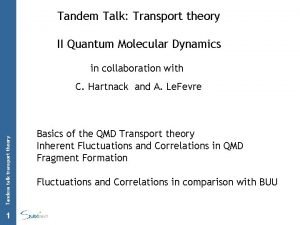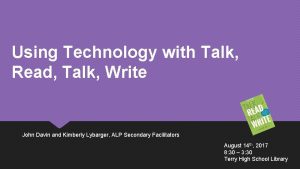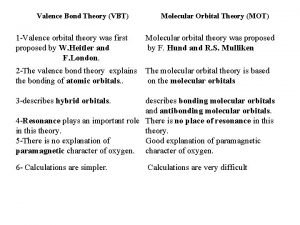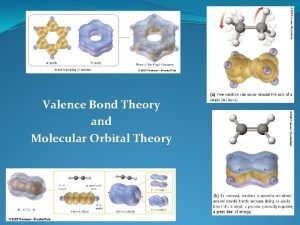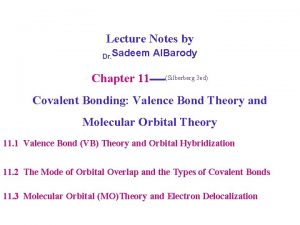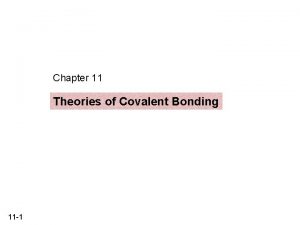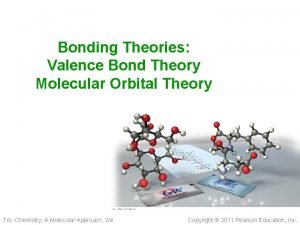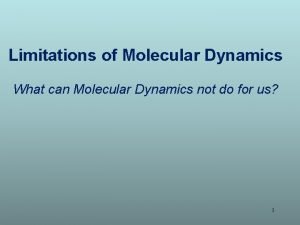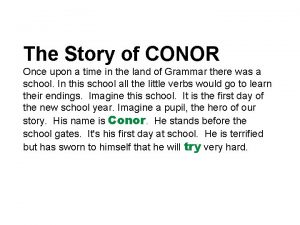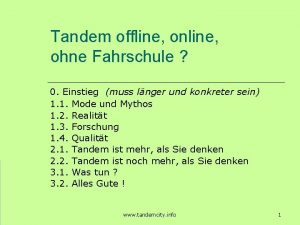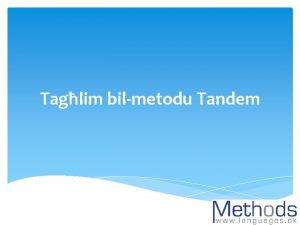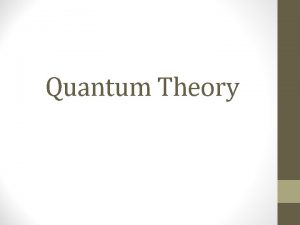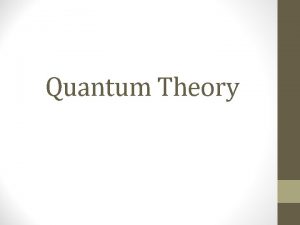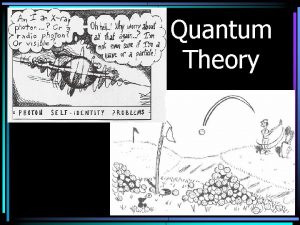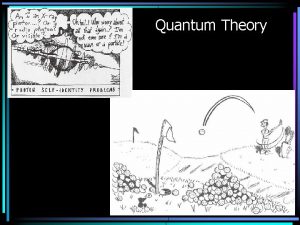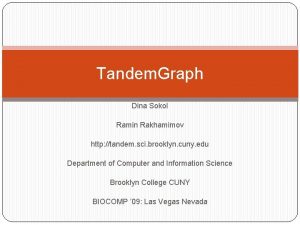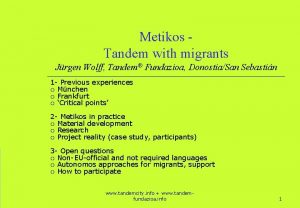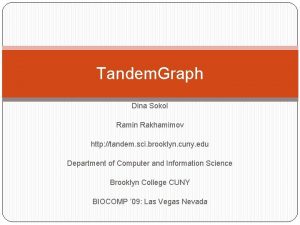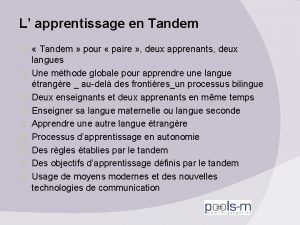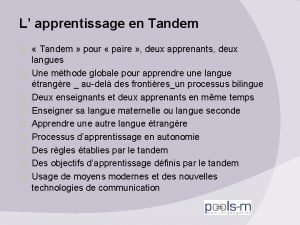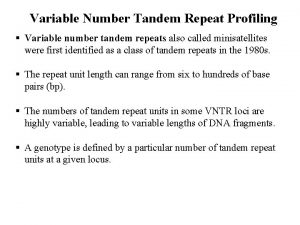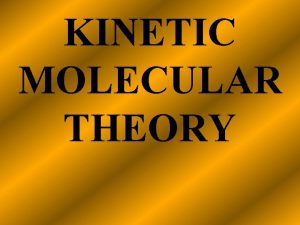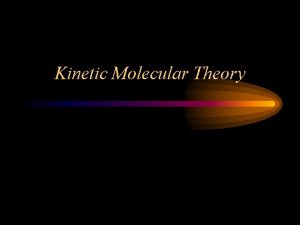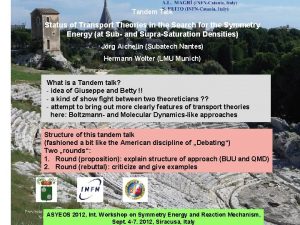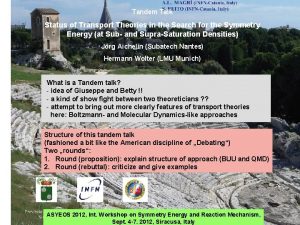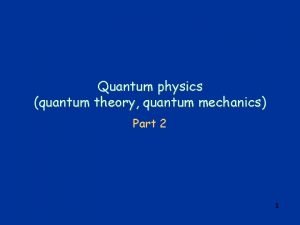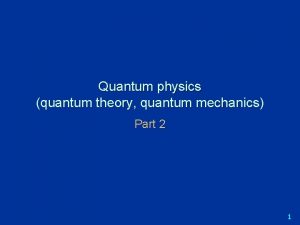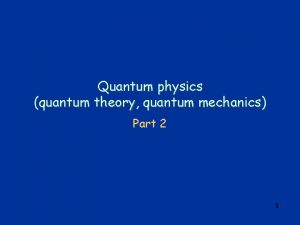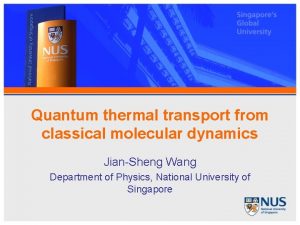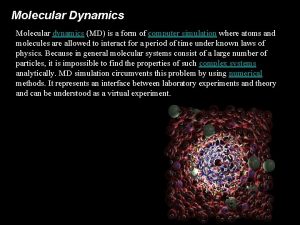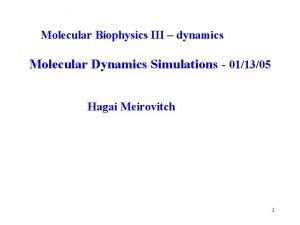Tandem Talk Transport theory II Quantum Molecular Dynamics


























- Slides: 26

Tandem Talk: Transport theory II Quantum Molecular Dynamics in collaboration with Tandem talk transport theory C. Hartnack and A. Le. Fevre 1 Basics of the QMD Transport theory Inherent Fluctuations and Correlations in QMD Fragment Formation Fluctuations and Correlations in comparison with BUU

QMD (like AMD and FMD) are true N-body theories. N-body theory: Describe the exact time evolution of a system of N particles. All correlations of the system are correctly described and fluctuations correctly propagated. Tandem talk transport theory Roots in classical physics A look into textbooks on classical mechanics: If one has a given Hamiltonian 2 For a given initial condition the positions and momenta of all particles William Hamilton are predicitible for all times.

Roots in Quantum Mechanics Remember QM cours when you faced the problem • we have a Hamiltonian • the Schroedinger eq. Tandem talk transport theory has no analytical solution • we look for the ground state energy 3 Ritz variational principle: Walther Ritz Assume a trial function which contains one adjustable parameter c, which is varied to find a lowest energy configuration: determines c 0 for which is closest to the ground state wfct and

Extended Ritz variational principle (Koonin, TDHF) Take trial wavefct with time dependent parameters and solve (1) Tandem talk transport theory QMD trial wavefct for one particle (Gaussian): 4 For N Particles: QMD AMD/FMD

The QMD trial wavefct eq. (1) yields very similar to classical Hamilton eq. (H-><H>) AMD/FMD equations much more complicated Tandem talk transport theory Of course trial wavefct is our choice and nothing prevents us to assume that also the width L is time dependent. 5 In QMD L is assumed to be constant It’s value has not changed since the first publication in 1985

How to determine the width L? - surface of the nucleus -> L not too large - correlations of the relative 2 -part. wavefct in a nucleus (healing distance) ≈ 2 fm - range of nuclear potential ≈ 2 fm L = 4. 33 fm 2 Tandem talk transport theory Where L shows up in the observables? - initially the average over many simulations gives the same ρ(r) as BUU but the density in each simulation fluctuates around ρ(r) Initial state fluctuations depend on L - L determines the local density change if a nucleons is kicked out by a hard collision (spectator fragmentation) L influences spectator fragmentation - L plays also a role when fragments are formed from prefr. in participant fragmentation (via binding energies) 6

Influence of L on fragment yield (Y. Leifels) Au. Au 150 AMe. V Tandem talk transport theory L=4. 33 fm^2 (L=4. 33 fm^2) 7 IQMD L=8. 66 (L=4. 33 fm^2) IQMD L=4. 33 There are differences but they are modest

How does a collision term appear? Because we have cheated!! (in QMD as in BUU) The Hamiltonian contains V = NN potential The NN potential has a hard core Tandem talk transport theory - makes TDHF calculations impossible - makes also transport calculations impossible (Bodmer 75) 8 Remember: hard core -> hard scattering does not appear in low energy collisions (Pauli blocked), so a completely different kinematics

Solution (taken over from TDHF): Replace the NN potential VNN by the solution of the Bethe-Salpeter eq. in T-matrix approach (Brueckner) G Tandem talk transport theory G 9 Consequences: VNN is real T is complex = Re. T + i Im T Replaces VNN σelast In Hamiltonian collisions (Skyrme) done identically BUU (testp. ) and QMD (part) To this one adds inelastic collisions (BUU and QMD same way) !

Collisions in BUU and QMD describe the (measured) one particle density BUU QMD Tandem talk transport theory and the measured Fermi distribution with Therefore is the same and consequently the collisions should be very similar Parallel ensemble method: subroutines are even identical BUT: In AMD and FMD cross section cannot be defined that 10 way -> FMD: no coll, AMD rather arbitrary

BUU/LV/VUU Summary Tandem talk transport theory Can predict correlations only if QMD/IQMD/AMD Can predict any correlation • deuteron density allows predictions of if neutron dens*proton dens fragments (what is rarely the case) • if the system is in HBT correlations global equilibrium Parameters: grid size width L consequences: Trento workshop We expect that • 1 body observables like (p, n), Λ, K, π spectra are identical This has extensively been checked (Init. Fluc not important) 11 • N body observables differ

Fragments - the most interesting n-body observables Tandem talk transport theory QMD has been constructed to study multifragmention Fragments are N-body correlations -> not accessible in BUU 12 In QMD fragments are preserved initial state correlations. Fragment nucleons come from a well defined subspace of the initially populated phase space

How one should this imagine? Easiest Way: percolation model (Bauer) Divide the nucleus in phase space cells. Inside the nucleus initially all cells are filled by a nucleon. Filled cell (model in 2 dim) Tandem talk transport theory Collisions with large mom transfer between proj and targ nucleons remove nucleons from their orig. cells 13 Connected occupied cells become prefragments Completely opposite to statistical models: No initial final state correlations, nucleons are formed very late at densities less than < 0. 2 ρ0.

How to define fragments in transport theories which propagate nucleons? Tandem talk transport theory History: 14 • Minimum spanning tree (possible at the end of the reaction) -> Study of fragmentation mechanism impossible • SACA or ECRA determines fragments very early -> possible to study reaction mechanism • New SACA (talk of A. Le. Fevre) allows for studying isotope yields and hypernuclei (including symmetry energy, pairing and shell effects)

Minimum Spanning Tree The Minimum Spanning Tree (MST) is a cluster recognition method applicable for the (asymptotic) final state where coordinate space correlations may only survive for bound states. The MST algorithm searches for accumulations of particles in coordinate space: 1. Two particles are bound if their distance in coordinate space fulfills Tandem talk transport theory 2. A particle is bound to a cluster if it is bound with at least one particle of the cluster. 15 Additional momentum cuts (coalescence) change little: Large relative momentum -> finally not at the same position

SACA or ECRA If we want to identify fragments earlier one has to use momentum space info as well as coordinate space info Tandem talk transport theory Idea by Dorso et al. (Phys. Lett. B 301: 328, 1993) : a) Take the positions and momenta of all nucleons at time t. b) Combine them in all possible ways into all kinds of fragments or leave them as single nucleons c) Neglect the interaction among clusters d) Choose that configuration which has the highest binding energy Simulations show: Clusters chosen that way at early times are the prefragments of the final state clusters because fragments are not a random collection of nucleons at the end but initial-final state correlations 16

How does this work? Simulated Annealing Procedure: PLB 301: 328, 1993 later SACA Tandem talk transport theory Take randomly 1 nucleon out of a fragment 17 E=E 1 kin +E 2 kin +V 1+V 2 Add it randomly to another fragment E’=E 1’kin +E 2’kin +V 1’+V 2’ If E’ < E take the new configuration If E’ > E take the old with a probability depending on E’-E Repeat this procedure very many times Leads automatically to the most bound configuration

Tandem talk transport theory ECRA or SACA can really identify the fragment pattern very early as compared to the Minimum Spanning Tree (MST) which requires a maximal distance in coordinate space between two nucleons to form a fragment 18 At 60 fm/c Amax and multiplicities of intermediate mass fragments are determined

Evidence for early cluster formation 1. 04 β/βproj 1. 02 mean value Tandem talk transport theory 1. 00 19 Fragment separator Strong correlation between β/βproj and N/Z Aladin supports this (Le. Fevre) . 98 Can only be explained if fragments are formed early and gets therefore full Coulomb boost . 96 Statistical models cannot at all explain this result N/Z

The test particle methods Only the test particle method made it possible to solve the BUU equations Tandem talk transport theory Test particle method: replace a continuous fct by discrete test particles 20 Method correct for unphysical fluctuations , for small number of testpart. BUT WHAT MEANS INFINITY FOR ACTUAL CALCULATIONS ?

When is N sufficiently large? One uses delta like forces: F = δ(ri -rj) (Skyrme) but then point-like test particles f= Σ δ(ri-ri(t)) do almost never interact. Solution: one uses grids (and introduces a grid size a which plays a similar role as the width in QMD). Tandem talk transport theory Euler 21 Result different if number of test particles is finite (usually N=100) Lagrange Average distance between nucleons 2 fm. Grid size ≈ 1 fm (surface). Therefore very many test particle necessary to avoid numerical fluctuations: 100 tp->12 in a cell->30% fluc

Bi+Xe, 28 AMe. V b=5 fm 25 test particles/N Less physical Tandem talk transport theory 0. 5 fm/c 22 100 fm/c 200 fm/c Bi+Xe, 28 AMe. V 275 test paricles/N More physical 300 fm/c 0. 5 fm/c 300 fm/c 400 fm/c 100 fm/c 400 fm/c 500 fm/c 200 fm/c 500 fm/c Different numbers of test particles-> very different physics

Fluctuations due to collision term The collisions term causes fluctuations (in density and momentum space) because it removes particles from their phase space cell In BUU these fluctuations are 1/N times smaller than in QMD and therefore negligible for large N (number of test particles) Tandem talk transport theory In QMD these fluctuations are responsible for fragmentation (especially for spectator fragmen. dominant for E> 100 AMe. V) (and also for single nucleon spectra because one has to subtract fragment nucleons to obtain measured single part spectrum) Because fluctuations are important: attempts to introduce 23 additional fluctuations in BUU

• take a small number of test particles (N 1): - mathematically this is then not a correct solution of the differential (BUU) equation - in practise problems with energy and momentum conserv. - assumes, relations between physical (σ, T, ρ) and mathematical fluctuations which are difficult to justify Tandem talk transport theory • add a fluctuating force to the BUU equation Colonna, Suraud, Ayik……. - mathematically correct - difficult to determine these fluctuations size in Δr and Δp, dependence of T, ρ, (as effectively in QMD). . ? ? ? 24 • move in BUU several testparticles simultaneously (Bertsch. . ) - how many and which ones? - in which way? Question: Why not start directly from a N-body theory where fluctuations are (better) under control ? (Width L fixed by nucl. density profile etc. )

Early fragment formation reproduces data quantitatively Tandem talk transport theory INDRA 25 QMD Example: Bimodality mean value as well as the distribution (ar. Xiv: 0708. 3639)

With ECRA we can trace back the fragment formation Can calculate a 2(t) Tandem talk transport theory ρ 26 Fragment pattern is created very early
 Tandem talk
Tandem talk Classical mechanics
Classical mechanics Quantum physics vs mechanics
Quantum physics vs mechanics Talk, read talk write template
Talk, read talk write template Amateurs talk strategy professionals talk logistics
Amateurs talk strategy professionals talk logistics Problem talk vs solution talk
Problem talk vs solution talk Valence bond theory vs molecular orbital theory
Valence bond theory vs molecular orbital theory Molecular orbital theory vs valence bond theory
Molecular orbital theory vs valence bond theory Valence bond theory and molecular orbital theory
Valence bond theory and molecular orbital theory 11:55
11:55 Hcn molecular orbital diagram
Hcn molecular orbital diagram Covalent bond melting point
Covalent bond melting point Ionic covalent metallic
Ionic covalent metallic Zinc oxide + nitric acid → zinc nitrate + water
Zinc oxide + nitric acid → zinc nitrate + water Molecular dynamics limitations
Molecular dynamics limitations Primary transport and secondary transport
Primary transport and secondary transport Membrane structures that function in active transport
Membrane structures that function in active transport Now answer the questions
Now answer the questions Passive transport vs active transport venn diagram
Passive transport vs active transport venn diagram Unlike passive transport active transport requires
Unlike passive transport active transport requires Primary active transport vs secondary active transport
Primary active transport vs secondary active transport Bioflix activity membrane transport active transport
Bioflix activity membrane transport active transport Active transport diagram
Active transport diagram Bioflix membrane transport
Bioflix membrane transport Seagull tandem material
Seagull tandem material Mercator tandem proficisci constituit
Mercator tandem proficisci constituit Tandem offline
Tandem offline
